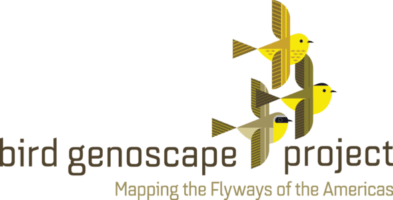Northern Fulmar
Geographic locations for the four major Pacific Northern Fulmar breeding colonies in Alaska (a) and the percent of the total metapopulation (population size) and total bycatch assigned to each colony (b). Most recent colony population estimates are as follows: Chagulak (~500,000); Semidi Islands (~440,000); St. Matthew Island (~450,000); and the Pribilof Islands (~79,700). Colony locations are indicated with open diamonds. Dominant oceanographic features are shown, including the Bering Shelf and Unimak Pass.
Northern Fulmars (Fulmaris glacialis) spend the vast majority of their lives out at sea in the North Atlantic, North Pacific, and Arctic Oceans. The only time they come to land is when they raise their young at breeding colonies on high rocky cliffs along the water. Like many seabirds, they often come into contact with commercial fishing operations where they are frequently captured as bycatch. This process kills tens of thousands of Northern Fulmars each year. However, we know very little about which populations might be disproportionately impacted by this process.
The Bird Genoscape Project partnered with multiple collaborators (see below) to investigate this issue. DNA was sampled from the four largest Alaskan Northern Fulmar breeding colonies (25 individuals/colony) and sequenced to identify unique genetic markers that differentiate the colonies from each other. Then, DNA from individuals caught as bycatch (n=1,536) was compared to the DNA from the different colonies. We found disproportionately high bycatch from the Pribilof Islands (6% of metapopulation vs. 23% of bycatch), and disproportionately low bycatch from Chagulak Island (34% of metapopulation vs. 14% of bycatch). Additionally, overlap between fisheries and colony-specific foraging areas diverge more during the summer breeding season, leading to greater differences in bycatch sus-ceptibility.
This work illustrates how we can use population specific genetics to link at-sea threats to colonies and inform management to reduce bycatch from impacted colonies.
Read below to learn about our work constructing the Northern Fulmar genoscape:
Baetscher DS, Beck J, Anderson EC, Ruegg K, Ramey AM, Hatch S, Nevins H, Fitzgerald SM, and JC Garza. Genetic assignment of fisheries bycatch reveals disproportionate mortality among Alaska Northern Fulmar breeding colonies. Evolutionary Applications 15: 447-458
Click the following links for access to the sequencing data:
The following individuals were instrumental in the development of the genoscape manuscript:
Diana S. Baetscher, University of California Santa Cruz
Jessie Beck, Oikonos Ecosystem Knowledge
Eric C. Anderson, Southwest Fisheries Science Center
Andrew M. Ramey, US Geological Survey Alaska Science Center
Scott Hatch, Institute for Seabird Research and Conservation
Hannah Nevins, Oikonos Ecosystem Knowledge
Shannon M. Fitzgerald, NOAA Alaska Fisheries Science Center
John Carlos Garza, University of California Santa Cruz
The following individuals & groups contriuted samples, equipment, or laboratory space to help develop the genoscape:
V. Gill
C. Columbus
E. Correa
V. Le
J. Watson
A. Fleishman
J. Felis
NOAA Alaska Fisheries Science Center
North Pacific Observer Program
The many observers, vessel crew, and vessel operators


